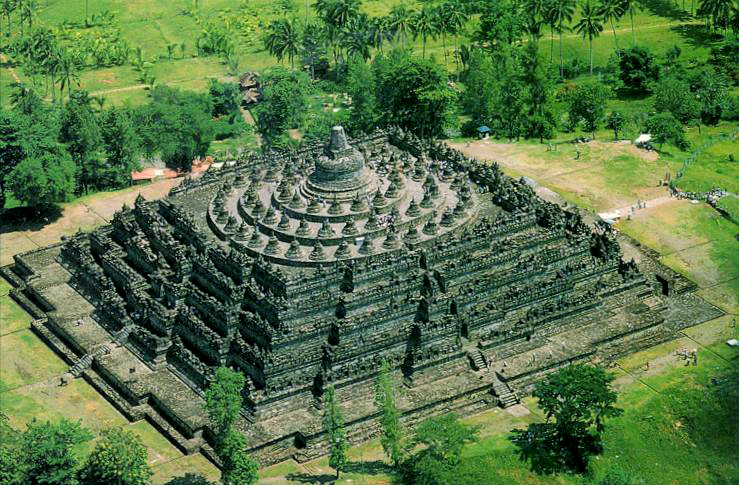MOST FACINATING AND BEAUTIFUL TEMPLES OF ASIA
Nearly
quarter of the people follow Asian religions like Buddhism, Hinduism, Sikhism,
and Taoism. They all worship their favorite deity in temples which are designed
differently like the religions. Here are the most fascinating temples in Asia.
Tiger's Nest Monastery: This monastery found on the edge of
a 3,000-feet-high cliff in Paro Valley is considered to be one of the holiest
places in Bhutan. The legend says that Guru Rinpoche (the second Buddha) flew
to a cave within the walls of the monastery walls to meditate on back of a
tigress. It was formerly known as Taktshang Goemba, when built in 1692. It was
later reconstructed in 1998 after a fire.
Wat Rong Khun: Found in Chiang Rai in Thailand is
very unusual compared to other Buddhist temples of the world. The all-in-al
white temple made with highly ornate structures gilded in mosaic mirrors which
shine magically is the brain child of the renowned Thai artist Chalermchai
Kositpitat. It is under construction and will take another 90 years to complete
it.
Prambanan: This Hindu temple in Central Jave,
Indonesia was built in 850 CE, consisting of 8 main shrines surrounded by 250
smaller ones. All most all the wall of the temple are covered with bas relief
carvings which tell the story of Lord Vishnu’s incarnations, adventures of
Hanuman, Ramayana and other epics.
Shwedagon Pagoda: No one can actually say when this temple
was built. It is estimated to be more than 2,500 years old. “Shwedagon Pagoda”
really means covered in gold. As the name indicates a queen of the 15th
Century donated her weight in gold to the temple. This is continued even today.
People save money and buy small golden leaves to stick on the walls of the
temple. To add to this the dome is covered with over 5,000 diamonds and 2,000
rubies. The main highlight is that the temple houses “8 strands of Buddha’s
hair”.
Temple of Heaven: Found in the Beijing, it is a Taoist
temple. It was constructed in the 14th century by Emperor Yongle of
the Ming Dynansty. The architecture of the temple is very unique- whatever
represents the Heaven is circular and whatever represents the Earth is in the
form of a square.
 Chion-in Temple: This temple was built in 1234 CE in
memory of the founder of JODO Buddhism, Priest Honen, who fasted to death in
the very spot. It initially had 21 buildings but due to some natural disasters
the oldest building in the temple is from the 17th century. People visiting
the temple first must pass through the largest gate in Japan – San-mom Gate. The
temple bell weighs 74 tons and needs 17 monks to ring it during the New Year
Celebrations. Another important feature of the temple is the SINGING FLOOR –
otherwise called as Nightingale Floor, the wooden planks were designed to
create a tune when stepped upon to alert the monks about intruders.
Chion-in Temple: This temple was built in 1234 CE in
memory of the founder of JODO Buddhism, Priest Honen, who fasted to death in
the very spot. It initially had 21 buildings but due to some natural disasters
the oldest building in the temple is from the 17th century. People visiting
the temple first must pass through the largest gate in Japan – San-mom Gate. The
temple bell weighs 74 tons and needs 17 monks to ring it during the New Year
Celebrations. Another important feature of the temple is the SINGING FLOOR –
otherwise called as Nightingale Floor, the wooden planks were designed to
create a tune when stepped upon to alert the monks about intruders.
Borobudur: Discovered in the 19th
century by Dutch occupiers of Indonesia this temple was built with nearly 2
million cubic feet (55,000 m³) of stones. It has 504 Buddha statues. No one
knows until today why this magnificent temple was built and abandoned hundreds
of years ago. But some say that Borobudur is a giant textbook of Buddhism
because they tell the story of Buddha and the principles of his teachings. To read
it a pilgrim must walk for 2 miles crossing nine platforms.
Vishnu Temple of Srirangam: found in the city of Tiruchirapalli,
India, Srirangam temple is one of the largest functioning Hindu temples in the
world. It is dedicated to Vishnu, one of the Gods in Hinduism. It was first a
small temple built around the statue which could not be moved once it was kept
here by a sage. But now after many centuries many kings built new temples
around it making it sit in an area of over 150 acres. It is very famous for its
gopurams or enterances which totals up to 21.
Angkor Wat, Angkor Thom, and
Bayon: Undoubtedly
the largest temple in history and a great inspiration to many novels and action
movies of Hollywood – ANKOR WAT was built early in the 12th century
in what is now Cambodia. It was first a Hindu temple dedicated to Lord Vishnu.
But in the 14th century when Buddhism swept across Asia, it was
converted into a Buddhism temple.















